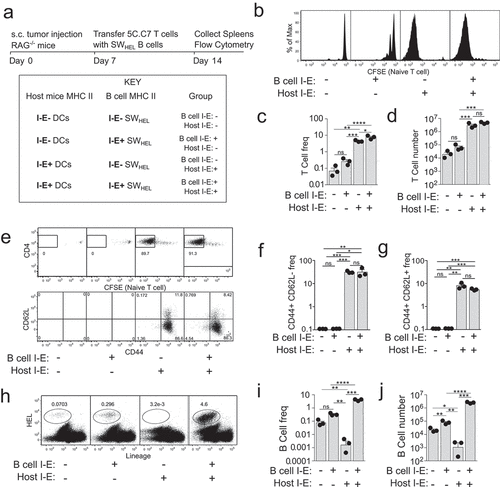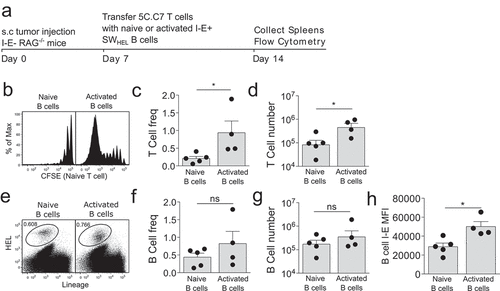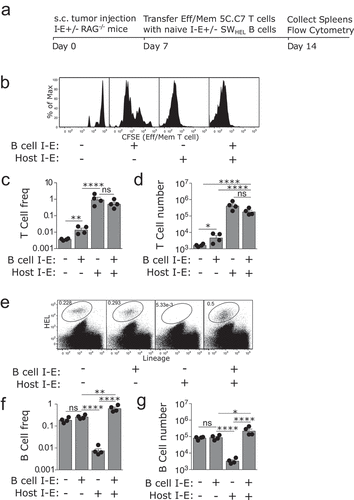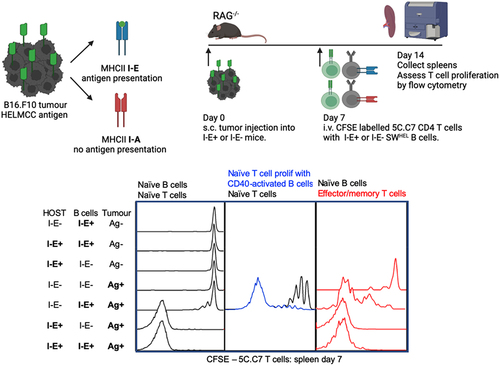Figures & data
Figure 1. Naïve tumour-specific B cells are poor activators of naïve tumour-specific CD4+ T cells in vivo despite a lymphopenic environment.

Figure 2. CD40 activated tumour-specific B cells have a limited capacity to activate naïve tumour-specific CD4 T cells.

Figure 3. Naïve tumour-specific B cells have a limited capacity to activate effector/memory tumour-specific CD4 T cells.

Supplemental Material
Download MS Word (304.1 KB)Data availability statement
Raw data were generated at the Centenary Institute. Derived data supporting the findings of this study are available from the corresponding author BF on request.

